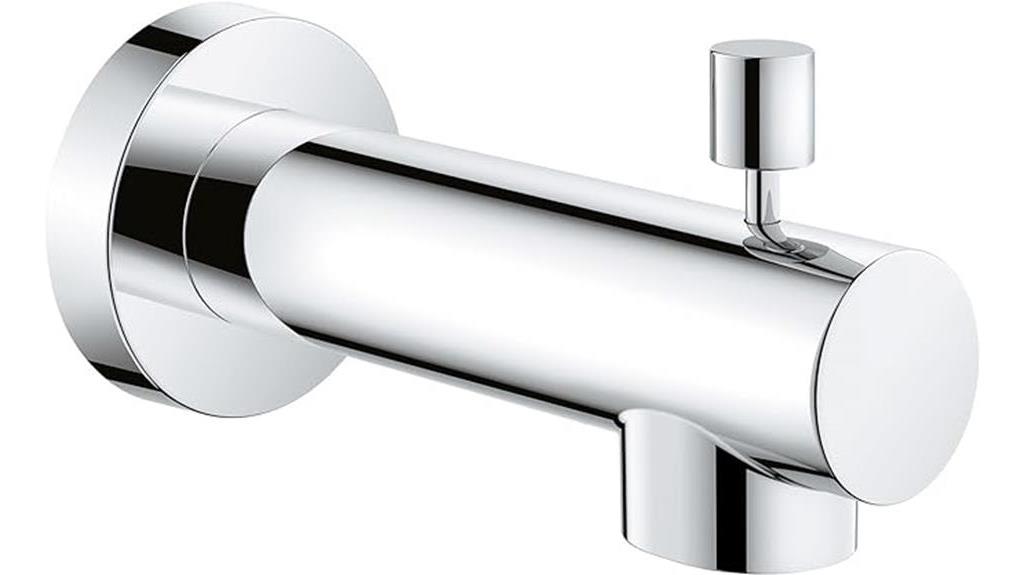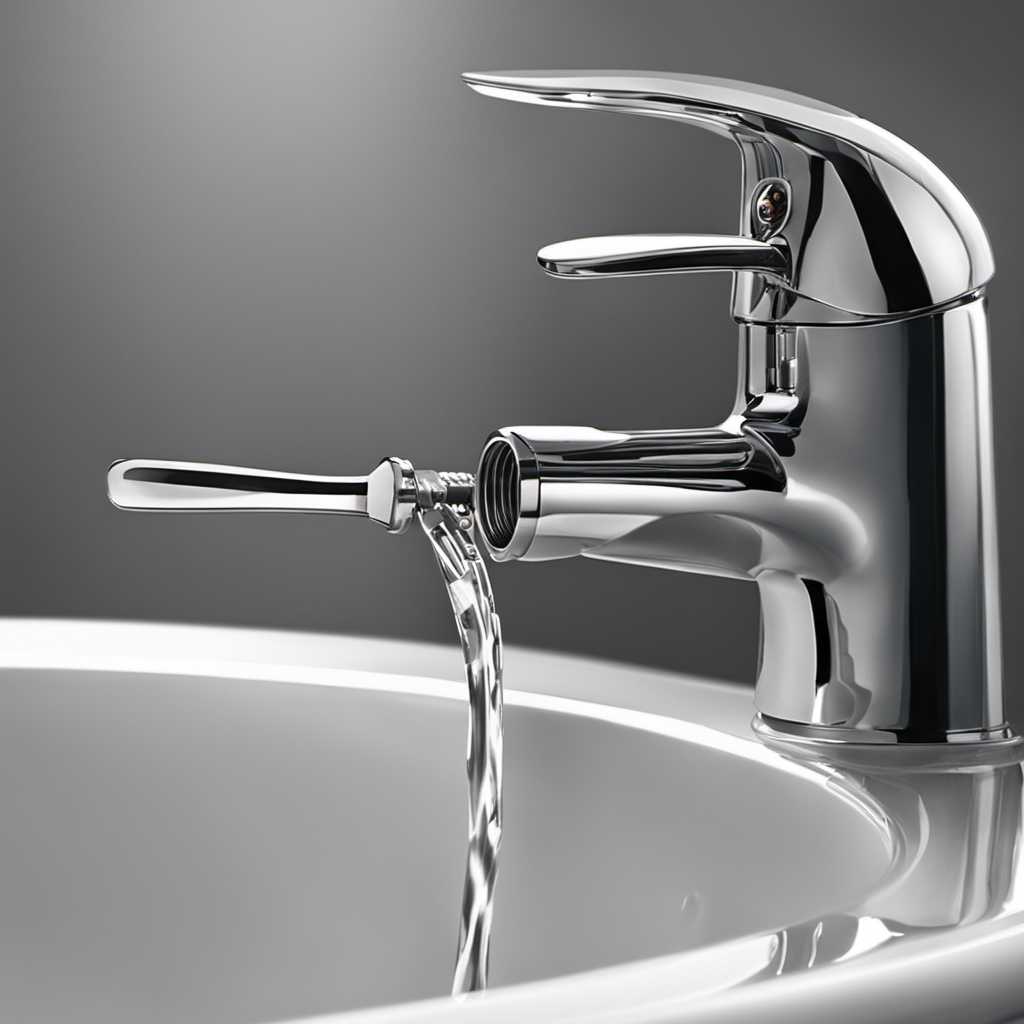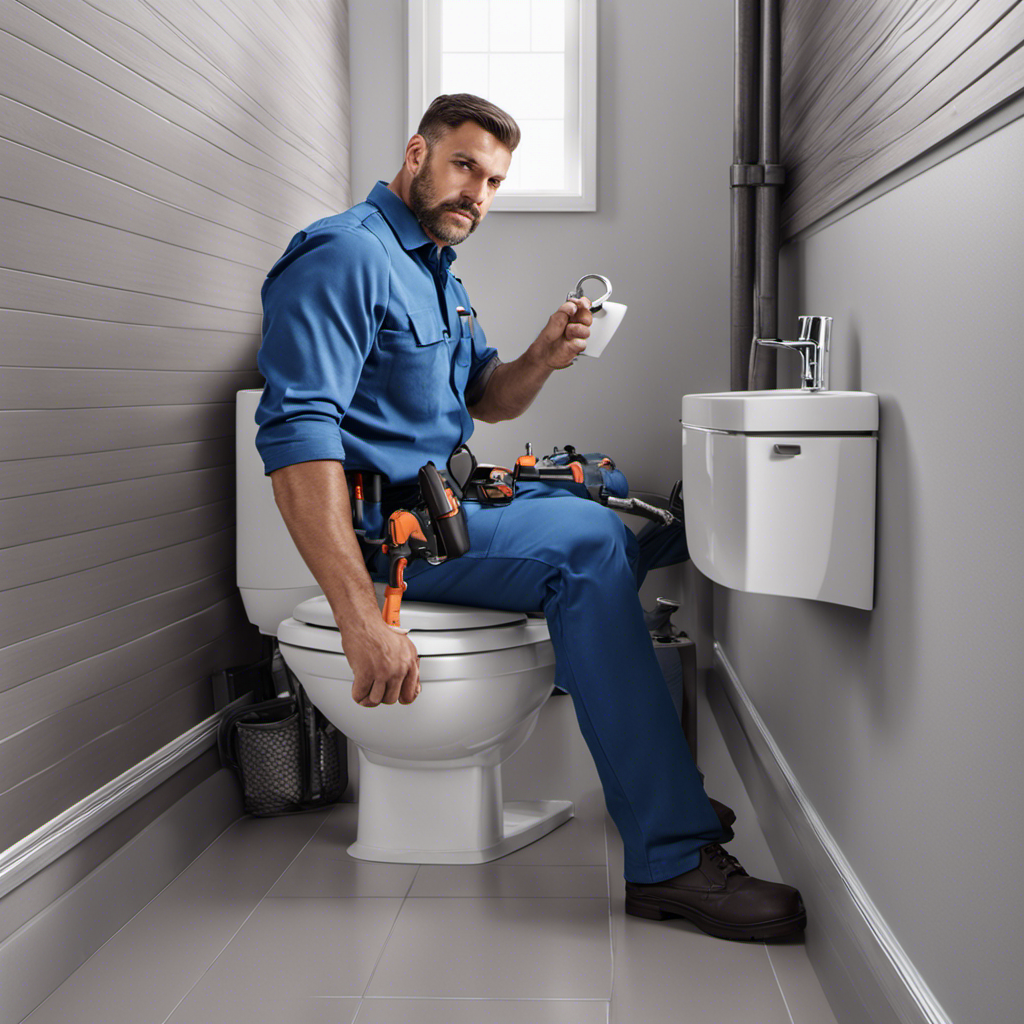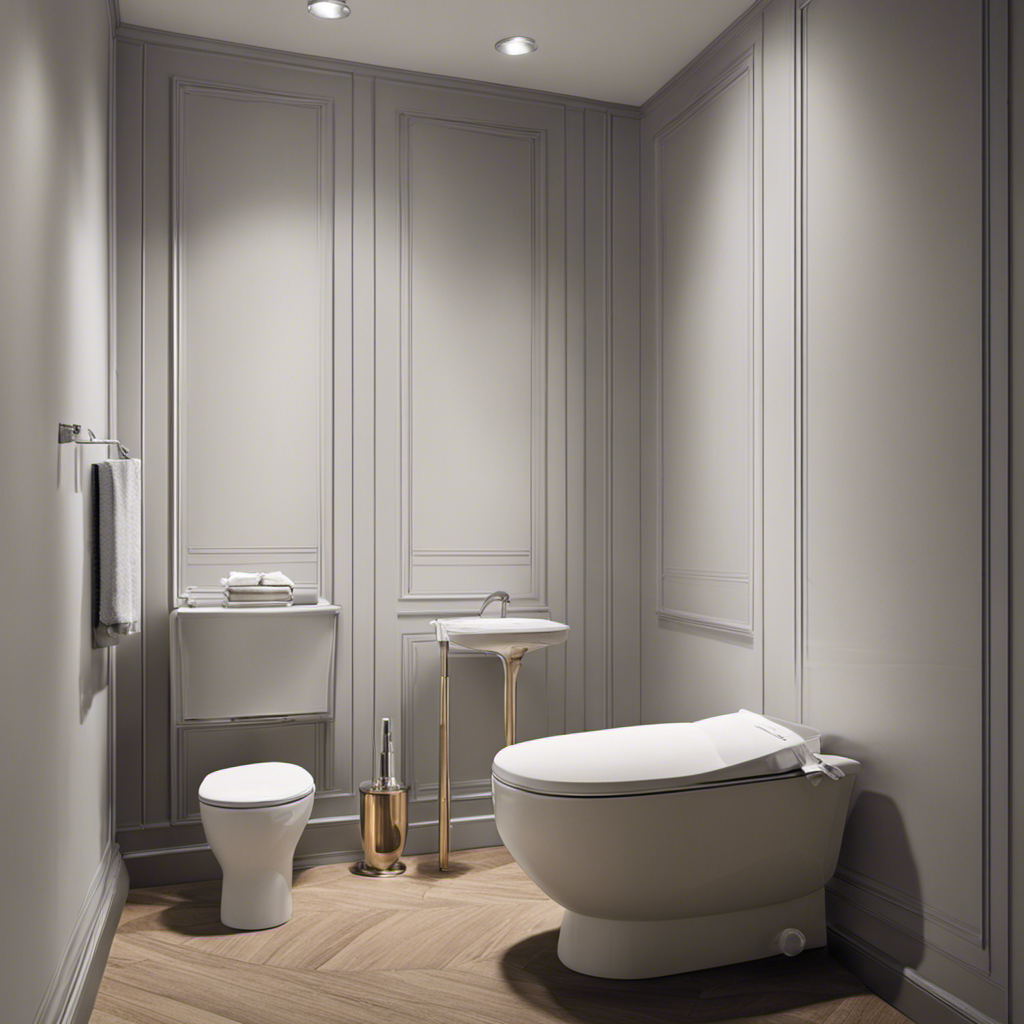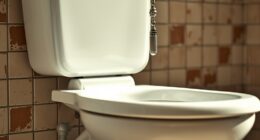I’ve been there before – standing in front of a clogged toilet, with the unpleasant presence of poop. But fear not, my fellow bathroom warriors, for I am here to share with you the secrets of toilet plunging.
In this guide, we will delve into the basics of plunging, assess the severity of the clog, and master the proper technique. We’ll even tackle the delicate matter of dealing with solid waste.
So grab your plunger and get ready to become a toilet unclogging expert. Let’s dive in!
Key Takeaways
- Cup plunger is the most effective type for unclogging toilets
- Suction and pressure, not brute strength, clear the clog
- Toilet auger is a flexible tool for unclogging toilets
- Baking soda and vinegar mixture can be used as a natural remedy
Understanding the Basics of Toilet Plunging
First, you’ll want to make sure you have the right type of plunger for this job. When it comes to toilet plunging, having the proper equipment is essential.
The most effective plunger for unclogging toilets is the cup plunger. It has a rubber cup that creates a tight seal around the drain opening, allowing for maximum suction. This type of plunger is specifically designed for toilets and can generate enough force to push and pull water through the pipes, dislodging any clogs in the process.
Common causes of clogged toilets include excessive toilet paper usage, flushing foreign objects, and a buildup of waste material. Understanding these causes can help you prevent future clogs and ensure a smoothly functioning toilet.
Assessing the Severity of the Clog
Next, you’ll want to determine the extent of the blockage. Evaluating the severity of the clog is crucial in order to choose the appropriate method for unclogging the toilet.
There are signs that indicate a major clog, which may require more advanced techniques. One of the most obvious signs is when flushing the toilet causes the water level to rise significantly or overflow. This suggests that the blockage is preventing the water from flowing through the pipes properly.
Another indicator is if the toilet bowl is not draining at all, or if the water is draining very slowly. In such cases, it is likely that the clog is more severe and may require additional measures to clear it.
Proper Technique for Plunging a Toilet
To effectively plunge a toilet, it’s important to create a tight seal between the plunger and the drain. This ensures that the pressure created by the plunging action is concentrated on the clog, allowing for a more efficient unclogging process.
To maintain the effectiveness of your plunger, regular maintenance is key. After each use, make sure to clean the plunger thoroughly to remove any residue or debris that may have accumulated. Additionally, check the plunger for any signs of wear or damage, such as cracks or tears, as this can affect its performance.
When plunging, one common mistake is using too much force. Remember, it’s the suction and pressure, not brute strength, that will clear the clog.
Tips for Dealing With Solid Waste in the Toilet
Dealing with solid waste in the toilet can be a challenge, but there are some tips that can help make the process easier.
If you don’t have a plunger on hand or prefer to use alternative methods, there are a few options available. One option is to use a toilet auger, which is a long, flexible tool designed specifically for unclogging toilets.
Another natural remedy for unclogging toilets is a mixture of baking soda and vinegar. Simply pour half a cup of baking soda into the toilet bowl, followed by one cup of vinegar. Let it sit for about 30 minutes before flushing.
These alternatives can be effective in clearing blockages caused by solid waste, providing a solution without resorting to harsh chemicals.
Preventing Future Clogs and Maintaining a Healthy Toilet
Maintaining a healthy toilet is important, and you can achieve this by regularly cleaning the bowl and avoiding flushing items that can cause clogs. Here are some key tips to prevent clog recurrence and maintain your toilet’s functionality:
-
Use a plunger: Keep a plunger handy to quickly address minor clogs. This tool is effective in dislodging blockages and restoring proper water flow.
-
Install a toilet auger: For more stubborn clogs, a toilet auger can be used to break up and remove the blockage. This specialized tool reaches deeper into the pipes and provides a more thorough cleaning.
-
Practice proper flushing: Only flush toilet paper and waste down the toilet. Avoid flushing items like wipes, feminine hygiene products, or excessive amounts of toilet paper, as these can easily cause clogs.
-
Regularly clean the siphon jets: The siphon jets, located under the rim of the toilet bowl, can become clogged with mineral deposits over time. Clean them regularly to ensure proper water flow and prevent clogs.
-
Consider preventive measures: Using enzyme-based cleaners or installing a drain strainer can help prevent future clogs by breaking down organic matter and catching debris before it enters the pipes.
Frequently Asked Questions
Can I Use a Plunger on a Toilet With a Severe Clog?
Yes, you can use a plunger on a severely clogged toilet. However, there are alternative methods to unclog a toilet and prevent future clogs. Let me explain the steps to safely and effectively use a plunger.
What Should I Do if Plunging Doesn’t Unclog My Toilet?
If plunging doesn’t unclog my toilet, there are alternative methods like using a plumbing snake or a chemical drain cleaner. If all else fails, it’s time to call a professional plumber for assistance.
How Often Should I Clean My Toilet to Prevent Future Clogs?
I clean my toilet regularly to prevent future clogs. It’s important to use a toilet cleaner at least once a week. Signs of a clogged toilet include water backup and slow draining.
Are There Any Alternative Methods to Unclog a Toilet Without a Plunger?
There are alternative methods to unclog a toilet without a plunger. One option is using a toilet auger, a tool specifically designed for this task. Another method involves using a combination of vinegar and baking soda.
Can Using a Plunger Damage the Toilet’s Plumbing System?
Using a plunger correctly should not damage the toilet’s plumbing system. However, it is important to avoid using excessive force. Alternatives to a plunger include using a toilet auger or a mixture of baking soda and vinegar. Common causes of toilet clogs include excessive toilet paper or foreign objects.
Conclusion
In conclusion, unclogging a toilet with a plunger can be a messy but necessary task. By understanding the basics of toilet plunging and assessing the severity of the clog, you can effectively use proper technique to clear the blockage.
While dealing with solid waste may seem unpleasant, following the tips provided can help you handle it safely.
Lastly, taking preventive measures and maintaining a healthy toilet will minimize the chances of future clogs. Remember, with the right knowledge and technique, you can tackle any toilet clog head-on.
